(first posted 6/5/2017) Some cars just have a way of making a connection with a guy. There are cars that have become iconic in film. There are cars that loom large from youth. There are cars that are just so strikingly unique that they cannot help but make an indelible impression. What do you have when a car checks all three boxes? We have this one right here.
My favorite motion picture of all time may be the 1959 Alfred Hitchcock thriller North by Northwest. In it, Cary Grant’s character (advertising man Roger Thornhill) is mistaken for a mysterious spy named George Kaplan. In running for his life from the sophisticated criminals who are trying to kill Kaplan, Thornhill meets a Miss Eve Kendall, who was played by the lovely Eva Marie Saint.
The movie is vintage Hitchcock, with suspense, action and little bits of subtle comedy. For those who have not seen it, I am doing my best to avoid plot spoilers, and urge you to leave your computers or other electronic devices immediately and go see it on the biggest screen you can find. I love the film for many reasons, but one of them is a couple of scenes where we get glimpses of Miss Kendall’s ride – a sparkling white 1958 Continental Mark III convertible, almost the spitting image of this car.
And the reason that this car resonated so much with me by the time I first saw this movie in the 1970s? It was because the 1958-60 Lincoln and I had some history.

I met my best friend Dan shortly after we both started 7th grade. We became fast friends and shared an interest in cars (and other things) that had come before our time. Dan’s father (my Car-Mentor Howard) had a beautiful original 1947 Lincoln V-12 sedan and my own father was only six months into a 1972 Continental Mark IV. I suppose you could also say that we were both wired to avoid current fads. All of these things came together and we became simply crazy about Lincolns of all kinds.
These 1958-1960 behemoths stood out, of course, as some of the most outlandish of the breed. This meant that Dan and I loved them simply for that reason. If there was any vehicle that was 180 degrees out of phase with the zeitgeist of the early 1970s, the monstrous 1958-60 Lincoln would be it. Silently egging us on was a derelict copper 1960 Lincoln Premiere 4 door that sat in a driveway somewhere near Dan’s neighborhood. We would ride our bikes there just to look at it, fantasizing how we could pool our money, buy it, clean it up, fix a couple of things and have the coolest car of any kid in Fort Wayne.
The fun began when one of us mentioned this idea to Howard, probably looking for some idea of how much such a car would sell for. We might as well have suggested donating to the Communist Party. “Junk!” was the first word that spat from Howard’s mouth. “Absolute Junk. These things were junk when they were new.” Howard went on for the next ten or fifteen minutes detailing how a man he worked for had bought one in about 1959 and had nothing but trouble with it. He remembered how the windshield cracked when the man drove it over some railroad tracks. He ended with the warning that if Dan ever tried to bring one of those things home, bad things were going to happen. I had never heard Howard take such a set against a car, but it was plain that he simply hated these things. An older me might have smiled and retorted with something like “That’s pretty strong talk for a guy with one of those POS 292 V-12s under a hood in your garage.” But having just barely made it into my teens (and it being over 45 years ago) that sort of backtalk just wasn’t done. Anyhow, with such venomous disapproval from an elder, the forbidden fruit of this generation of Lincolns became all the more attractive to us.
As Dan and I got older we moved on to other cars and neither of us ever got that ’58-60 Lincoln we were so crazy about at age thirteen. But they still fascinate me the way few other cars of that era do.
I am going to go out on a limb here and assert that these are the best looking American luxury cars of 1960, and not by a little. Not that the bar is all that high. This car should get more credit than it does for a basic shape that turned out to be quite predictive of the future. This car (along with the 1958-60 Thunderbird) was one of the first to offer the unapologetically rectangular shape that would become so mundane by 1970 after so much of the character had been removed from these earlier designs. Seriously, the styling on this car is far closer to the 1970 Lincoln Continental than would be 1960 to 70 comparisons of Cadillac or Imperial.
As briefly influential as Virgil Exner’s 1957 Chryslers and Imperials were and as flamboyantly famous as Harley Earl’s outrageously finned 1959 Cadillac would become, the 1958-60 Lincoln turned out to be the design most predictive of the future. Forget the fins, the huge expanses of chrome and the over the top sculpting of the Cadillac and the Imp, because this Lincoln is positively conservative in comparison. The Lincoln is simply one great big broad-shouldered rectangle (albeit one with a lot of visual interest).
Did I say visual interest? If it were possible to ditch the canted headlights, the wraparound windshield and the period roofline, the basic bones of this car could have been competitive in 1970.
After all, a 5,200 pound car of these dimensions would not become out of the ordinary until the New World Order writ by the Energy Crisis of the 1970s and the CAFE (Corporate Average Fuel Economy) regulatory scheme that it spawned.
Here is something I’ll bet you didn’t know about these Continental Mark V convertibles: One of 2,044 produced, this convertible was the 2nd highest production body style behind the 4 door hardtop (6,604). The big droptop Connie outsold the 2 door hardtop by nearly 600 units, and roughly doubled production of the 4 door sedan, the 4 door town car and the 4 door executive limo combined. I can’t think of another American convertible that performed so well in comparison with the other body styles offered. You have to admit that these made for a particularly impressive convertible.
You also have to admit that I have become something of the Continental convertible whisperer here on CC. Some time ago I stumbled across a 1940 Continental being loaded onto a transport and now this. Is there a car more opposite the original Lincoln Continental in concept, design and execution than this one? With the possible exception of the beautiful red leather that both offered, that is. The 1940-41 model ruled for decades as the “it car” of its generation. This one? More like the Anti-It.
I very nearly missed this one. I was on my way to the bank with a deposit for my office. I did not have long before the bank closed and there was no time to waste. Until I spied this giganto Lincoln about to be loaded onto a truck parked on a vacant lot. The driver knew nothing about it but had no problem with me stopping to snap a few pictures. I could have stared at that inviting red leather interior until nightfall, but the driver had to move along and I had to get to the bank. It was a good thing I stopped when I did because by the time I left the bank (having made it there with moments to spare) the Lincoln was there no more.
Just like in North By Northwest, the car was there for a brief moment for me to enjoy and then it was gone. All that was missing was Eva Marie Saint. Or Howard, shaking his head and saying “Yes, it looks nice. But it’s still junk.”


















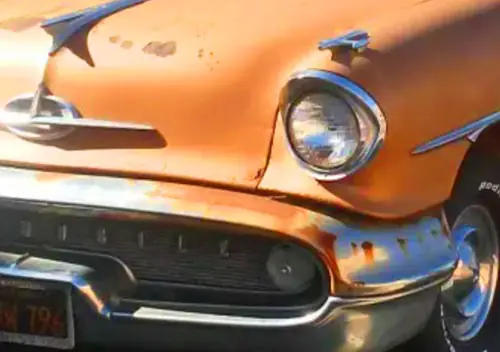
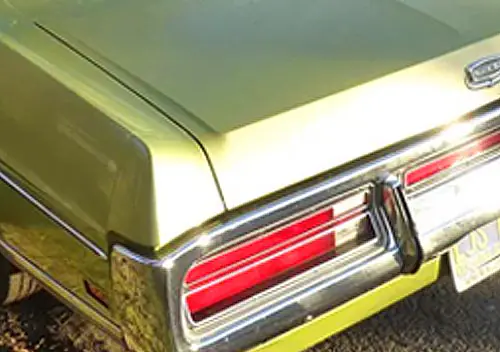
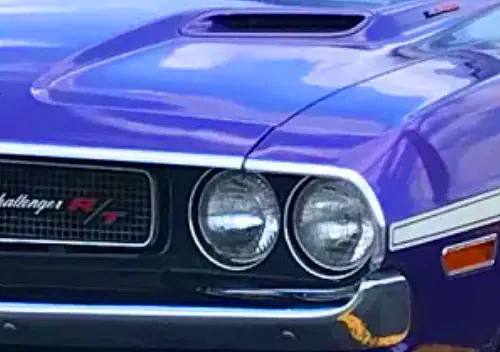

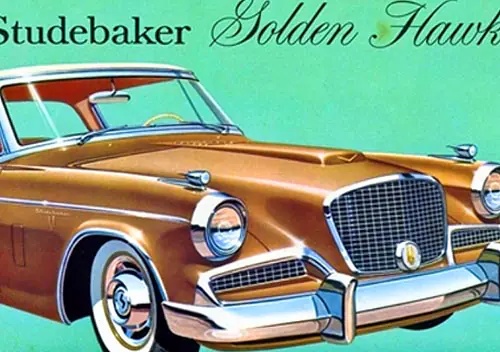
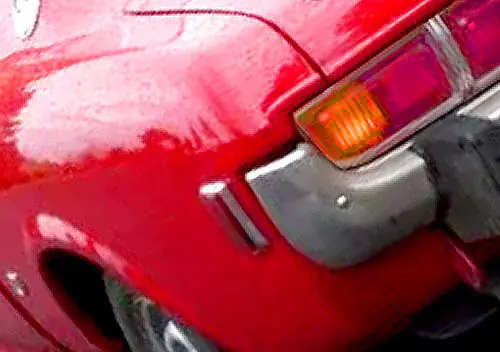

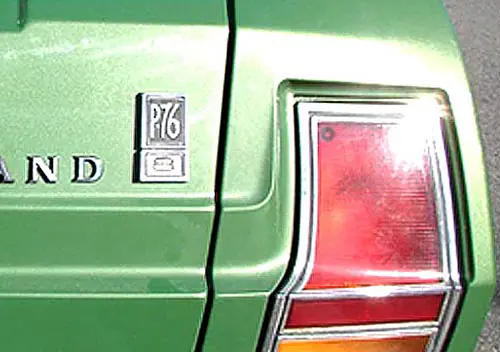
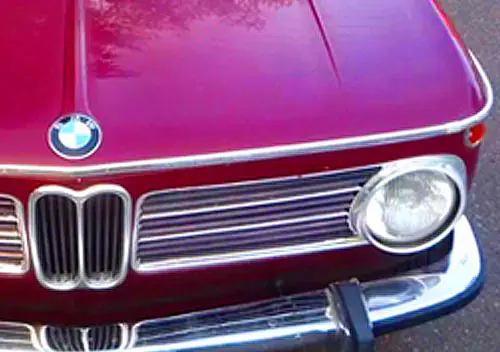
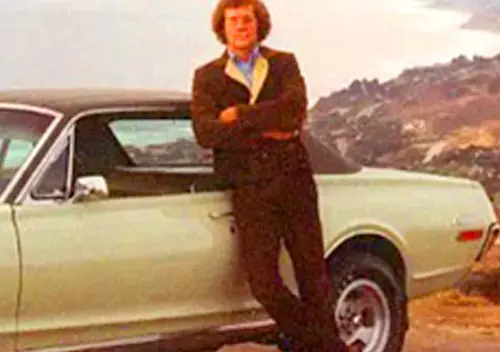

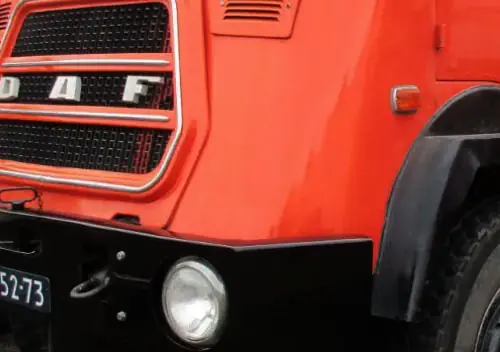
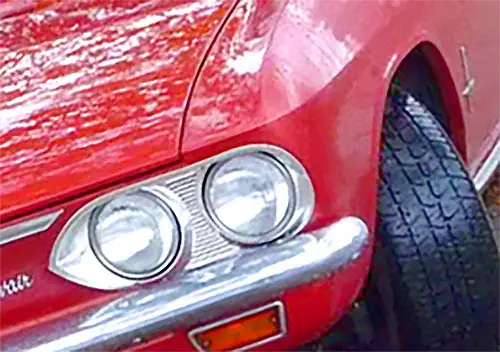

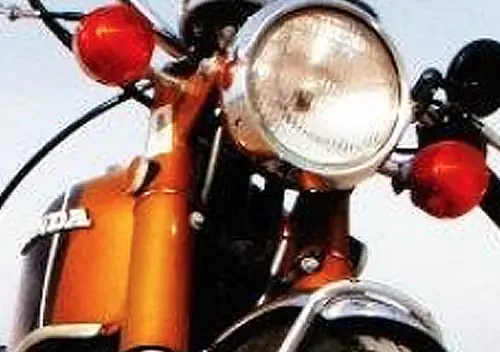
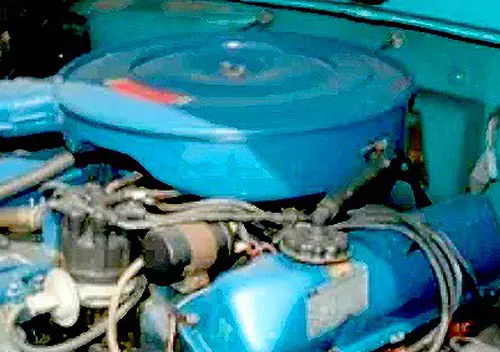



Score another original thought thread for Mr. Cavanaugh. The depths of the rectangular design idiom these Continentals established were heavily plumbed right through the 1980s. Although the ’61 Continental remains iconic with its unassailable stylistic purity of proportion, The late ’50s boats were predictive in a way I never noticed. Thank you, J.P.! One could graft the canted headlights onto many a car 5-8 years newer and the it wouldn’t get two glances driving by.
The screengrab from N x NW is also great… flip it, ‘shop out the other Petrified Presidents, and you’ve got a Lincoln being driven by a Lincoln!
Yes, I figured it was time for some controversy that did not involve Donald Trump. And thank you, “original thought thread” is so much nicer than the “crackpot” that I had been expecting. 🙂
I love the Lincoln driving Lincoln idea. This could have been so much more effective than McConaughey driving Lincoln.
How about a CGI Abraham Lincoln driving while speaking with Matthew McConaughey’s disaffected drawl? There’s a nightmare ad for you.
McConaughey’s Lincoln commercials are as idiotic as the first Infiniti commercials, you know, the ones that didn’t actually show the car. Plus ol’ Matthew always looks like he needed to shower before he put on that tux.
You have to wonder if the juxtaposition of “Lincoln in Lincoln” might not have been a coincidence, given Hitch’s sense of humor.
He had a thing for the blonde in a power position; it’s no wonder he put her at the wheel of the car with the biggest “corporation”.
Everything about this era of Lincoln is outsize… even the horn button could comfortably accommodate a double serving of red velvet cake with your evening coffee.
.
There is something about the 58 – 60’s. Saw the movie Parrish back in the 70’s and all I remember about it was the kid was driving a 58 lincoln.
http://www.imcdb.org/vehicle_445838-Lincoln-Continental-Mark-III-68A-1958.html
Thanks for your treatise on this car. I have loved the ’58 through ’60 Continentals since I first saw them as a boy. They are down right elegant.
I am absolutely in love with these 1958-60 Lincolns (not surprising considering the other car in my garage). I would take one of these and a 61 four-door convertible to round out the collection with my Mark III.
To me the best part of the 1960 Continental is the rear styling. It looks like it’s a mile wide plus the double-dihedral form and the tailfins cutting into the rectangle are neat features.
The design of the rear window and convertible top is something to behold. Love how the rear glass slides down, Mercury Breezeway-style, and the huge chrome bars attached to the “C” pillar fold down with the top.
One of the best CC write ups in a long time. Perfect Monday morning coffee condiment!
Why, thank you.
Our garage didn’t sell Lincolns, but since there was no dealer in town, we had two customers who had us service these. One had a ’59, the other a ’60. The customers were both old and didn’t drive much so the cars were surprisingly rust free for older Wisconsin cars. The ’60 was the 1st car I worked on that had limited slip. Lincoln called it Directed Power. The trunk keyhole cover was embossed with it. The ’60 had rear leaf springs while the earlier models had rear coils.
All this made the ’60 a challenge for our parts man when we had to replace the differential! Seems the owner had a flat and the original spare was also flat. A helpful wrecker driver got an odd size used tire & wheel for the owner to make it home, but the differential howled after the trip and we had to replace it?
The ’60 was also unique in having a lower compression 430 with a huge 2 barrel. I guess even Lincoln buyers were becoming economy conscious – though I find it hard to use economy and Lincoln in the same sentence.
One thing well appreciated in Wisconsin was the excellent through door heater ducts. The darn things were some of the only cars Ford ever made with 2 heater cores.
In retrospect, probably a good thing not to have gotten one though. These were Ford’s 1st unibody. The structural integrity wasn’t very good when new. Once rust set in, these deteriorated rather quickly.
Heated seats were not a thing yet, but these Lincolns and the ’61-’63 did provide you with heated armrests.
What a lucky find, such a lovely, near-perfect (other than the baggy soft top) example in Indianapolis where one would expect serious tin worm! The lack of license plates suggests an out-of-state car…California? Florida?…on its way to a new owner who will cherish this beauty. Maybe JP will see it again.
He has seen through the surface textures of this car to the basic bones of its styling concept. Well done!
I suspected that the car was just passing through and had been temporarily removed from the carrier so that another vehicle could be either added or left off. I had never seen that one around before and have never seen it since. For that matter, I have never seen another carrier at that location in the 25 years I have frequented that intersection. A true example of the powerful gravitational pull that CC exerts in the universe!
Well of course Miss Kendall drove a stylish car – she was an industrial designer, after all!
Also one of my favorite films, and I now have a raised awareness of and appreciation for the Mark V.
There’s always something vaguely menacing about these Lincolns, regardless of color. They have a look like a living thing.
Exactly. And, while this is a wonderful writeup it must be said that this generation of Lincolns put the wretched in wretched excess.
A few years late to the party, but I really like that description. Very apt.
And I can hear Miss Kendall rushing away, accompanied by Bernard Herrmann’s wonderful score. One of my favorite movies, too, prime Hitchcock. Although I could never figure out, as a flatlander, why Roger Thornhill didn’t think to jump into a roadside ditch to get away from that crop duster. Maybe they don’t have roadside ditches in Manhattan.
As a Hoosier of long standing, I can tell you that the famous shots involving the cropduster were most assuredly *not* filmed along US 41 between Chicago and Indianapolis as the plot would have us believe. The flat prairie with no trees in any direction is not our landscape.
I have long suspected that there are more foolproof methods of killing a guy than by using essentially a WWI style of strafing. But then wouldn’t movies be so much less entertaining if cinema hit men were better at their jobs. 🙂
I just read an interview with the movie’s screenwriter, and I believe he said that the crop duster scene was shot near Bakersfield, CA.
I’ve always been fascinated by the lines on these Lincolns. To me they looked infinitely more interesting than the ’61-’69 models.
When looking at these Continentals, I’ve always been distracted by the canted headlights and the rear view that appears like it’s being stretched up at the corners. I’m probably not the only one to find these design elements distracting, but until reading this piece, I didn’t think about the overall design of these cars without those late-50s styling exaggerations. Looking closer though, I see its qualities… particularly when compared to the 1960 Imperial & Cadillac.
Also, somehow I’ve never seen North By Northwest… never even knew what it was about. Now, I’m committed to watching it – so, thanks!
Well said – those diagonal headlights and that triangular C pillar (even on the convertible) make it hard to notice much else about the car.
“When looking at these Continentals, I’ve always been distracted by the canted headlights and the rear view that appears like it’s being stretched up at the corners. I’m probably not the only one to find these design elements distracting, but,…”
John Najjar who headed this series styling had the mandate to “fill out the corners” to create the longest, most impressive styling possible. In taking inspiration from the La Tosca styling concept by Alex Tremillus, the rectilinear forms which included the outward canting of the upper body surfaces combined with the lack of descending taper as the surfaces move toward the ends creates the optical illusion of surfaces rising toward the viewer
To see what Najjar did, place a ruler on a profile view of any ’58-’60 Lincoln image, you’ll see they are dead straight to the corners. Any other car has a long descending taper.
Link to La Tosca styling concept images:
https://www.google.com/search?q=La+Tosca+styling+concept&rlz=1T4GGHP_enUS685US685&tbm=isch&tbo=u&source=univ&sa=X&ved=0ahUKEwig48f7jqfUAhVIzmMKHfA8BCcQsAQILA&biw=1093&bih=513
First I’ve seen the La Tosca concepts. Amazing rear bumper, possibly the wildest ever. You can see the La Tosca styling elements in the 56 thru 60 lincoln for sure.
A fascinating observation. I have always understood that a slight taper at the front and rear is to fight they eye’s tendency to see a sway or a sag in the car, something that this one suffers from just a bit. Or would if there were not so much other distracting candy on virtually every surface.
Entasis only on its side.
Wow — that’s really interesting. Thanks.
+1.
IMHO, it`s probably Hitchcock`s best film. Other than this Lincoln, one can do a complete story on all the great 40s and 50s vintage cars that appear in this film, not to mention the New York Central`s ‘Century Limited” train, the American version of ‘the Orient Express’. The one film that I will ALWAYS try to watch, I`ve seen it countless times and it always remains fresh and exciting. It`s right up there on my cinematic Mt. Rushmore.A film that was ahead of it`s time, it had a huge influence on the spy thrillers of the 60s, especially the James Bond film ‘From Russia with Love’.
Anybody notice the Skoda in the background in one of the shots?
http://bestcars.uol.com.br/carros/classicos/skoda-440-1.jpg
I wonder if that was an accident, or something related to the spy business.
I have a story similar to JP’s. In the late ’70s, my mother used to shop at Lou’s Italian grocery store on Rt. 10 in Denville NJ. I of course came along, and while she shopped, I always went outside to check out this black 1959 Lincoln Premiere 4-door that was abandoned in the weeds in the next lot, down a little hill, next to some deteriorating greenhouses. I of course knew what the car was, since I had extensively studied Tad Burness’ Car Spotter’s Guide since age 11. I loved all cars of the 1955-62 era, which were somewhat rare even then!
One day to my disappointment, the Lincoln mysteriously vanished, leaving a large rectangular patch of dirt. Later the greenhouses were demolished, a new shopping center now occupies the site, and nothing is recognizable. The car looked something like this, but it was a Premiere, not a Continental:
This generation of Lincoln really stands out and I’ve not seen many in my neck of the woods.
My first experience with this style of Lincoln was a 2 Door ambulance metal toy as a kid of five. So it must have been a 58 or 59 model year. Later in grade one, I sat in the back seat of a 60 Lincoln hardtop purchased by the parents of a school chum. It was huge compared to any car I had sat in up to that time.
The convertible is a fine looking ride with the other models almost as impressive. In 2011 I had the opportunity to appraise an original condition four door hardtop sold new at a dealership in Edmonton. It was a pleasure to go over the car and see how it was designed compared to other luxury cars of the same era.
These are the Lincolns I’ve nick-named ‘The Bat-Mobile’!
I sometimes wonder what the proud new owner of that 1960 Lincoln thought once the all-new ’61s came out, and made his ’60 really look like a dinosaur!
I used to hate these things. But in today’s world of CAFE, political correctness, and uber government regulation, I sometimes feel the urge to have something like this – if only to stick it to those who want to dictate every second of our lives.
Thinking about summer in the white convertible, with the top down and the AC on MAX!
Happy Motoring, Mark
I’ve seen North by Northwest, but it was on tv in the 60s (as was pointed out, NOT the best way to see this movie) and don’t remember the white Lincoln convertible.
I’m a fan of the original version of the Disney classic, Parent Trap. In the Brian Keith version his potential fiancée is driven to and from Keith’s remote cabin in a Lincoln of this vintage….a blue 4 door sedan, IIRC.
These cars, when seen near another 50s car look so huge, like there was a glitch at the factory that caused them to be up-sized by 15-20%. Yet, they carry it better than the 59 Cadillac and Imperial.
Turner Classic Movies reruns this from time to time. On a good (1080P 55inch or so) LED TV I think the show is quite good.
As far as the cars go, I like the 60 Eldorado convertible best.
The Faces have not changed since the movie was made, but everything else has, new parking lot, new buildings ……..
CC effect strikes again! I was recently scouting a restoration shop that had one of these, only in black! It was a tad longer than the owner’s dually Silverado pickup truck! Then, last Sunday, I saw an older gentleman driving an immaculate 2 door hardtop on I-285, again in black! Now an article on them, thanks JP!! 🙂
Over time I’ve felt ambivalent toward the styling of these Lincolns and am warming back up to them in recent years.
My first experience with these cars was this 58 promo-like friction model I’ve had since back in the day. It was used as a toy so has some damage and is missing the hood ornament, and the acetate plastic suffers from the typical warping. My Dad had a serious heart attack in his 30s when I was 7 and around the time the car was introduced. I stayed with my paternal grandparents during his hospitalization and my grandmother found me staring longingly at this model car at the drugstore. Of course it was in her shopping bag when we got home. So I have fond memories of her, the car that is happily still in my possession, and my Dad’s recovery (he would live to a few days short of his 83rd birthday).
Later one of my mother’s great friends had a new 1960 Lincoln Continental sedan, one of the first air-conditioned cars in our neighborhood. It was metallic green and long and low as a mid-century modern house, the natural habitat of these cars. It was always a thrill to see her drive by with the windows closed on a hot and muggy summer day in Indiana. By 1960 most of the bugs had been worked out of these cars and hers was kept for five+ years (long by Indiana standards back in the day) and traded for a new Oldsmobile Starfire coupe in 1965. I remember being in strong approval of that exchange as the Lincoln by that time was very dated and showing rust and wear.
In the fall of 1960 my Dad and I went to the new 1961 auto show at the Memorial Coliseum in Fort Wayne and there we first saw the all new Lincolns and Thunderbirds. We were over the top in love with them. From that point on, I thought the 58-60 Lincolns looked like the dog’s lunch. The fact that we also were huge admirers of JFK and that the Lincoln became a symbol of his administration sealed the deal. Eventually Dad would own a lightly used 65 Thunderbird and 71 Continental, and a new 78 Continental Mark V Cartier edition.
So I also have some intense personal history connected to these cars, and really appreciate the sharing of yours, Mr. Cavanaugh. Good Monday reading and the essence of CC – thank you.
Thanks! You make an excellent point – the smashing stylistic success of the 1961 Continental has made it almost impossible to consider this car strictly on its own terms. Never mind that Lincoln’s 1961 sales increased by under 500 units from 1960 (Studebaker still outsold Lincoln even in 1964), the 58-60 series were fatally tainted just by the mere image of what followed them.
Yet there is some hint of the 61 in the shape of this car (which is so hard to see under all of the “stuff”).
CA Guy, you beat me to it. I, too, have saved my ’59 Lincoln Continental Mark IV promo model all these years, still in pretty good condition (hood ornament still there!) save for the plastic warping, which occurred fairly early on, as I recall. It was always a favorite of mine.
I have had a love affair with Lincolns going back to my childhood, beginning with my aunt and uncle’s ’54 Lincoln Capri. I used to ride in one of my high school classmate’s father’s ’56 Lincoln Premiere, even by 1963 it still retained its elegance. When the ’58’s first arrived, I can remember as a 10 year old accompanying my father on one of his many new model introduction tours, and sitting in one of these at the local Lincoln Mercury dealer, instantly transported into a world of unparalleled luxury, enveloped in yards of leather and agog at all the power gizmos, a feast for the eyes of a small kid. Later on in 1962, with my father beginning his quadrennial search for a new car, we happened upon a two year old Continental Mark V four door hardtop sitting in the used car lot at Beverly Hills Lincoln Mercury. It was early evening, the dealership was closed, but in those days the cars were left unlocked overnight, so we stopped and I clambered all over this leviathan, sitting in the rear seat with the muted lighting and soft leather upholstery, once again transported into this rare automotive world of luxury. I pestered my dad for days to buy this car, but he passed, later that year ordering a new ’63 Mercury Monterey Custom 4-door hardtop, so I had to settle for a least a modicum of that Lincolnesque experience. He did years later spring for a gently used ’65 Lincoln Continental, and then a new ’71 Continental, so I have had this Lincoln connection going on all my life.
Mr. JPC, thank you for a fascinating article on this often maligned luxury car, very nicely done!
Don W – your 59 model is more detailed than my 58, e.g., the separate red taillights – on mine the rear bumper, grille, and taillights are all just chrome flash without separate lenses. The interior of the 58 has good detail though, including separately painted inserts for the upholstery design.
I wish I had pictures of my mother’s friend’s 1960 Continental four-door hardtop. It was quite a rare and impressive car in our little town at the time. The Conti was huge – it dwarfed other cars. And one of very few cars in the area with air conditioning – considered by simple midwestern folk to be a wild extravagance at that time. I remember she indulged me by opening the breezeway window on one occasion when the car was new.
I’ll let you in on a little secret, I painted those red taillights when I first got that model with my mother’s red nail polish! Just couldn’t get with the chrome colored version, when all my other promos had separate red plastic insert taillights. That breezeway window was a fun toy, if you will, I just loved it on my parent’s ’63 Mercury, I always had it down when I was driving that car (I had just gotten my drivers’ license in 1963). That car was also our first family car with air conditioning and power windows, as you mention, a big extravagance back then.
Neil Young’s electric Linc-Volt …..
That burned, it looked like the electric conversion stuff set fire to it. It was in storage when it went up.
Anybody know if he fixed it?
Remarkable. I had no idea that even the convertibles had that rear-canted window. I’m wondering if it rolled down separately or want down with the top–or both!! I have read that the Lincoln was simply too large for the unibody technology of that era. (I once looked at a pink hardtop like this in a weedy Oakland lot. Actually in fairly good condition, but what was a condominium dweller going to do with something like that?)
Will this thing show YouTube videos?
Ah, now that Marcel Marceau-type yoga action is very seductive. Also happy to see there is a reason for the first 27 feet of that trunk.
In his book, The Insolent Chariots, John Keats describes an incident with a rich Texan and his white Lincoln. This illustration was used in the book.
Jim, you haven’t lost a beat. Glad to hear that the meetup was successful and enjoyable. BTW, one of these Lincolns appeared in a Father Knows Best episode, in which Margaret won the car in a raffle. Naturally, it became the object of contention within the family, and was subsequently sold off.
JPC, I’d be happy to sit and watch the film w/you anytime—a favorite of mine also.
I’d be interested to know what got changed during its 1958-59-60 run other than tuning the engine “down” a bit. Early-adopters seem to have been partly beta-testers, according to PM’s survey of ’58 owners (I’ll parcel out in several installments below). BTW, PM reported in 1991 that that 16.9% of new owners rating it “Poor” was the all-time high for their Owners’ Surveys. Yikes—talk about teething troubles!
An excellent resource – I love reading those old Owners Reports.
Many forget that not only was the car itself new (along with its unit construction), there were two brand new engine families. Both the FE (Ford-Edsel) and the MEL (Mercury-Edsel-Lincoln) were new for 1958, so there were plenty of places for teething pains. The Wixom production plant was brand new for 1958 models as well.
As someone above noted, they switched to leaf springs (from coils) for 1960. The 1958 Owners Report mentions rear shock issues, and I believe that with the weight of that car and the coil springs, the shocks were asked to do too much. There is that Tom McCahill 3 part comparison test of 1958 cars on YouTube where after a test of suspensions the 58 Lincoln broke both of its shocks, so this must have been a common problem if the suspension took a pounding.
There was also a new dash for 1960 which eliminated a large piece of glass on the instrument panel that cracked fairly often. I suspect that most of the improvement from 1958-60 involved normal improvement as they built more, plus the rear suspension change. Production levels were quite steady over the three years, ranging from around 25-30K units each year.
#2:
#3:
#4:
#5:
#6:
#7:
#8:
#9 (last one)–editor’s comment is a gem: “why complain about $50 more a year for gas when depreciation costs $50 a week?”
North by Northwest is scheduled for the afternoon of June 15 on TCM. Thanks for the inspiration to watch it again. Thanks too for the informative article on what is, for better or worse, a unique automobile.
Some press-release “journalism” here answers a few of my questions about the ’60s:
JP,
Obviously one of my favorites, my first car was a ’59 convertible, second was a ’60 coupe. Currently restoring a ’60 convertible (see below).
Love the color! That will be gorgeous when it is done. I believe you mentioned these last week, so I figured you would enjoy today’s car.
Absolutely! My ’60 coupe was Polaris white, A/C, tan leather, power lube…loaded (see below). These were truly “snapshot” cars, perfect reflections of the time. The retreat from 1958, the smoothing out of the design, the retreat from 375/400 HP to ’60s 315, leaf springs for coils, the realization that saner times were coming. Yet, the ’60 was by far the best of the three years, noticeable even when driving both the ’59 and the ’60 back then.
Thanks for the great article!
I like your observation of how the styling of these had more in common with the ’70 than the ’60s from Cadillac and Imperial did – I’d never thought of them in that light. It makes me wonder what might have happened if they’d done a full re-skin and cleaned up the styling of this one along the lines of the ’61 Continental, and kept it in production as the Big Lincoln (a la Cadillac Seventy Five) with the Continental as a smaller running-mate.
I’m another who didn’t realize that the convertibles had the breezeway window.
Mr Cavanaugh – thanks for this. You may have seen my comments on modern cars (and I’m thankful to have had many cool ones) but I think those 58-60 connies are among the best.
I’m the guy who says that “if it doesn’t say GM or BMW it’s broke” … but good lord I remember seeing one of these in the real life, and I was astounded at their class and state-li-ness, if you will.
I would propose that I actually prefer the 61-64 connies, but that damned well does not diminish these beasts.
Thanks again. My 86 town car (may she rest in peace) remembered these classic Lincolns, as did I. 🙂
“I am going to go out on a limb here and assert that these are the best looking American luxury cars of 1960”.
Ahem. That has got to be one skinny limb, made of glass. As luxury cars go, there are more Lincolns at the top of my list than anything else. But in my eyes these are ugly cars. I would consider either the Cadillac or Imperial better looking. Considerably. Yet, if I had one I would love it, and pet it, and call it George. BECAUSE of it’s ugliness.
However, it is still a sight to behold and thank you for taking the time to stop and take pictures and for the write-up.
Old Pete,
If you had seen some of the initial proposals for the larger ’61, you’d think that over! McNamara took a look at the designs and almost closed the division.
As a child in the late ’50’s, these were the first Lincolns with which I became smitten, begged my dad to stop at Arkport Motors, the Lincoln-Mercury dealer in that western New York town whenever passing through. The mere imposing presence these cars had greatly impressed my young, impressionable mind.
Summer 1960: setting on our porch one hot evening near dusk, suddenly a long, black ’60 Premiere four door hardtop came cruising slowly along the street. We all gawked, straining to see who were the people in this infrequently-seen luxury car. The return trip at the same slow speed allowed us to see it was Ila Mae, a transplanted southern lady who was running a small bakery in town that was doing quite well. She and her family had driven every street to make sure we all knew that Ila Mae now had a new Lincoln, replacing her ’57 Mercury station wagon.
Fast forward a couple years, the black ’60 was replaced with a white ’62 Lincoln Continental sedan even as the bakery was beginning to fail since supermarkets began to displace the small groceries that were her best customers. Late in 1963, the Lincoln was quietly replaced by a white ’64 Chevy Impala sedan, no show-off slow cruise this time.
Although a half century has passed and at various times used ’58-’60 Lincolns were investigated but never purchased, I still want one. I defend my questionable automotive taste by telling people I was smitten with the ’58 Lincoln, have even yet never gotten over it.
Looking at the grill of the Lincoln, I had a psychedelic flashback to an echo of the Ford line for 1960, all in white, including the Galaxie in the middle, and going down to the lowly Falcon below, and up to the majestic Continental above, the mighty flagship of “The Wonderful World of Ford.”
I also didn’t realize the convertible had the canted rear window. How classy.
I fell in love with the ’60 in particular after reading a Special Interest Autos or Old Cars Weekly (can’t remember) article on them in 1987. Kept that article for a long time and I’ve always been enamored of these cars. Iirc, the MEL was throttled down to 2-bbl in ’59 because of economy reasons due to the recession? I’d kill for this car, and having seen one with a red interior I’m 9 years old all over again…
Love the tie in with North by Northwest. That movie is a feast of eye candy in terms of people, places and things.
I made a childhood visit to Rushmore in the mid ’70s and the visitor center was still much like in the movie – which is a story itself. Apparently the Park Service had some issues with shooting violent scenes in the park, and most representations of the center are a sound stage. My family visited Rushmore around 2009. Everything had been substantially redeveloped.
I too have thought about which car was the first to lock in the long lasting proportions of the big car rectangular look. I’ve generally been open to interpreting high fin cars as having the look, but with appendages that soon disappeared. With that, I’m pretty open to nominating the ’57 Mopars, but then again the ’57 Ford certainly hints hard at the new proportions. No doubt, the entire 1958 FoMoCo line-up is a strong contender, In addition to the Lincoln, I see it a lot in the high-end Edsel hardtops.
Not so many years ago, I sort of discovered the ’58-’60 Lincolns, cars I had been very little aware of. I sensed immediately that if I was a man of taste that I was supposed to hate them, but I absolutely love them.
One of my favorites…………….
Black seems to be a great color for this body style.
Interior and instrument panel looks good, too.
Not my favorite Lincoln generation, but if everyone liked the same things the world would be a boring place.
Well, J.P.C., you’ve got great taste in movies, but the predictive, groundbreaking Lincoln was really Elwood Engel’s masterpiece Continental of 1961. Here’s why:
The same year as the mind-altering E-type Jag. My then 12-year old sense of proportion and form was never the same again…
I don’t think anyone will dispute that the 61 Lincoln was a groundbreaking design, least of all me. But I see a good deal in the 1958-60 generation that predicts the themes that the 61 will execute so brilliantly.
The earlier car got the basic rectangular shape and several of the details, such as the slight kickup of the beltline, the minimal use of chrome trim on the sides and the way the main body seems slightly inset from a fenderline that extends uninterrupted from front to rear. It is not hard to see the way the 61 with its bladed fenders (front and rear) employed a much cleaner way to “fill the corners” the way the 58-60 did with headlight pods and little fins.
For a car designed at the height of 1950s madness, the 58-60 Lincoln (particularly in Continental trim) was remarkably restrained in many ways, something that can be appreciated with one look at a contemporary Mercury.
Thanks, J.P.C., for the thoughtful formal analysis. I feel that the ’58-’60 Lincolns have much more in common with the contemporary Mercury than with the Elwood Engel Lincolns. Testing a ’58 Mk. III convert, Road & Track commented that the front and rear styling themes had no relationship, but that the car was so enormous that nobody could view both ends at once. They may be restrained compared to a ’59 Caddy, but certainly not when compared to the Pininfarina-designed Caddy show cars from ’58 to ’61:
Howard was by far not the only guy who spat at the mention of these. As I recall, all the way through the 80’s and maybe even beyond, it was hard to give them away, certainly compared to Cadillacs of the same vintage.
And after all, none other than Ford Motor Company tried to write them out of history, by resetting the Mark number to III in 1968. I have always thought that move was a bit like the Soviet habit of doctoring historical photos to remove those who had fallen out of favor.
The ’58-’60 was arguably a better LUXURY car than the ’61 (note not “car”). The ’58-’60 was built to a concept, not a budget. The ’61 was designed and built to make a profit. Had it not, Lincoln would have been finished. Thus, the ’61 was built much closer to the T-Bird, using the cowl and many hard points. The ’60 offered power vent windows, dash and rear A/C vents, power antenna, FM radio adapter, Hess & Eisenhardt limousine/town car option, 375-315 HP vs. 300 HP, multiple body styles, more imposing size and more interior choices. So, while the ’61 was groundbreaking, it represented a different, more pragmatic approach to the business problem of Lincoln.
I’ve read other mentions of the T-Bird and Lincoln sharing cowls. But the T-Bird is an inch lower and no doubt more than that at the windshield base, and three inches narrower. And the T-Bird parallel wipers go the right way, with the left blade ending up close to vertical in front of the driver. The Lincoln wipers go the other way, an odd mistake, like it was destined for the UK. So I don’t think so.
The T bird actually used opposed wipers, not parallel. Yes, the Lincoln used parallel that swept “backwards” (as did the Avanti). I have never looked to see if there was something about the system that allowed for the passenger side to share components.
Every generation of Lincolns from the late 30’s to the early 60’s are design icons to me, except the 1952-55, which look like dressed up Fords. A couple years ago I saw a 1956 two door hardtop in the Coney Island Mermaid parade, glistening awesomely in the sun. The bumpers etc. were no doubt rechromed and looked better than original. These and the ’58-’60 are probably generally undervalued as classic designs, although perfect ones are worth a lot today. The interiors of all of them are spectacular as well. The 1958 got worse with each facelift, just like the ’61.
1956 Premiere 2 door hardtop:
The idea was to make the manufacturing simpler, they weren’t identical, just similar. The wipers nobody seems to be able to explain, some say that the ’61 Lincoln was designed in a narrow room (the Stiletto Studio) and an engineer was looking at the mirror image on the back wall when he did the wiper drawing. But, if this is so, why didn’t they change it with the ’66 design? The goal with the ’61 was to make a profit and this entailed a simpler construction process, with the more successful T-Bird being the lead dog, so there was much more thought given to keeping the two cars closer than they were before. Although the Lincoln had hydraulic wipers in ’61, the T-Bird had electric through ’61-’62, then converted to hydraulic. So, it was never a perfect match, just a little boost for the bottom line.
emjayay,
Think about a Lincoln dealer in ’56…the award winning ’56 Lincoln and the Continental. After a lot of struggle, finally good times are here. Then the questionable ’57 fins, followed by the ’58-’60s. It was a long wait until 1961! By the way, I wouldn’t agree that each year of the ’58-’60 design got worse, just more conventional, after all they were stuck with a unique basic design which was unibody and unpopular, all they could do was to make it a little less “dramatic”. I always liked the ’60 best, much better interior and the front bumper ends looked much better.
Excellent piece of writing, both as a personal anecdote and as innovation, pointing the connections that others don’t see. On the “squareness” point, I think you’re dead right. However, with gentle respect, personally, subjectively, I remain firm in thinking it an appalling looking thing. Good lord, in profile, the rear window finishes BEFORE the wheel cutout even begins, making such length thereafter that resembles it more of a trunk with a small cabin attached. The front looks like an angry bland person. The reverse-slope rear window looks like an upmarket pram when expanded to these dimensions, whilst someone clearly backed into the middle of the rear bumper and it was too late to change the tooling. It has all the famous silliness of late-50’s American styling with none of that masters-of-the-universe, flying-into-the-future exuberance that makes, say, the Caddy such an icon. It is a large, dull, besuited heavily built man trying to pull a face , stick his bum out and wear a lampshade, and it doesn’t work.
(Having ranted thus, keep in mind, Mr Cavanaugh, that I am someone who loves, for example, the Renault 16, a car that most think resembles a crashed prototype, so please do not take this as an affront to your taste; two people look upwards, one to see a radiant god, the other a particularly lonely sky).
They do look like they could be turned over and used as a sled-
https://i.wheelsage.org/pictures/r/renault/16_tx/renault_16_tx_9.jpeg
“The car with the railway lines over the roof?” my father would say. Doubtless, if we’d been snow-goers, he’d have made the sled joke. Hmm, the Renault Rosebud? (Well, the post did begin with a golden era film reference…).
It finally dawned on me, where the inspiration for this automobile came from. George Mason from Nash dropped some acid, asked Dick Teague to design something twice as large as a Rambler, and this was the result!
All kidding aside, nothing could have made this car any more attractive to me no matter what preceded it or followed it. The 1957-61 Imperials, for all their excess, had cleaner lines and just looked better. (Please, forget about the Cadillacs. The 1958s were not too bad, but that 1959-60 body was even uglier than the Lincolns were.)
I sure wonder what Packard would have begotten, had they hung on for five more years ~
Drawings and clays of the proposed (real) ’57 Packards that never made it past a single prototype look a bit like these Lincolns but with a vertical bar front grille, cleaner flanks, a similarly shaped C pillar but with a wraparound conventionally sloped rear window, and stubby fins. I could imagine this design looking fresh through the late ’60s simply by ditching the reverse-canted A pillars, cleaning up the C pillar area, and snipping off the fins.
Excellent article. However: Lincoln Premiere, not “Premier.”
Thanks for the sharp eye. Somehow my brain never noticed that final “e” in the name.
I agree with everything said by you JPC. Dad had an architect friend with a white ’58 Continental and I thought it was an absolutely stunning car when he first brought it to our house after he bought it new, and still do. It was very different than the ’58 Cad and Imp, and far more impressive in many respects. While the ’61 was a masterpiece in it’s own right, these are too, and certainly expressed the era in their own very unique way.
Lincoln ads stressed the spaciousness of the interior, it had ample head, shoulder and leg room. Lincoln designers might have been trying to make the car with the biggest interior. Contemporary testers would say that it was possible to seat four passengers across each seat. Though who would want to be seated elbow to elbow like in a bus seat?
On the other hand, the ’61-’63 was much more “cozy” inside. The front seat was akin to the GM Astro Bench with separate seat backs and a pull down armrest. The back seat was likewise a bit tight. When I drove my Dad’s ’63, it felt more like a personal car than a sedan. A four door coupe?
Lincoln later found a way to build a spacious cabin by basing their vehicle on a large SUV platform. The Navigator is much shorter, but taller, and a couple of inches narrower. But it has much more utility in passenger carrying and cargo carrying capabilities.
The ’58-’60 Lincoln was akin to the longer wheelbase Cadillac 60 Specials than to the standard DeVilles.
Didn’t the ’58 have air suspension? Cadillac also offered air suspension at this time. I’ve read that both systems were trouble prone.
I’ve always been amazed at the difference between the 58-60 Contis and the 61s. Couldn’t be more further apart! I loved both designs, however.
The styling was too advanced for it’s own good. People were not ready to see the straight lines. I have to believe the ’65 Cadillac stylists were inspired by some of this.
”the styling on this car is far closer to the 1970 Lincoln” Ed’s auto review
does not agree but yes for the following years , 4:00 to 6:00 https://www.youtube.com/watch?v=BlJk9p2YSrA&ab_channel=Ed%27sAutoReviews
The roofline disappoints me on 2dr/convertible, but on 4dr (or convertible with top down), everything seems to work. And, oh, that interior/dashboard!
Browsing Popular Mechanics (Feb. 1958) yesterday, I learned that the front-bumper “Dagmars” had another nickname in the trade:
The 1960 Continental was certainly an improvement over the ’59 – the simplification of the headlights and grille brought a measure of elegance to the front end. But overall there’s still so much going on that it’s hard to see it as a single piece of design. It’s always looked to me more like a cartoonist’s impression of a luxury car than the real thing.
Of course it’s possible to love it at that level. It’s hard not to stare at this car, with something like wonder, whenever a picture of it appears.
The concept of ‘less is more’ (possibly exemplified at the time by the completion of the Seagram Building in New York City in 1958), had to wait another year or two to make it to the auto industry. 🙂
I love these cars. I wonder what got this thread going again after years of inactivity.
IAC, one of the things I like about the 58 – 60, and esp the 60, is the interior design. The dashboard instruments were beautiful and solid and reflected a “drivers’ car” ambiance too. The steering wheel center and column itself look billet-like. Yet still with an air of elegance. The switchgear for the windows, cigarette lighter knobs, other knobs, the horizontal grill of the dash, the integration of the AC vents with the dash motif… all of that is both elegant and substantial in a way that disappeared after 1960 when plastic and fake chrome started taking over and nothing felt substantial. The seats and panels are wonderful, the AC even had vents thru the doors to feed cool air to the back seat. The car had two evaporators to provide the cooling. Possibly one of the best cars ever made in that era. Sure, some later ones were good, even better in some ways, but none were as good all-around when in you include the quality and substantiality of the appointments, fabrics, switches, etc.
On the outside of the car, it too has a billet like look and feel. You don’t see joints much, everything just comes together, all of one piece. The grill is gorgeous and solid, not like the stamped sheet metal in lessor cars. So are the bumpers. The car doesn’t so much ride out and over bumps, it crushes them yet you barely notice. And for a large soft riding car it handles better than average for its time. And it scoots away from stoplights, esp the 58 but even by 1960 it still had what it takes to keep up with just about anything else out there. In one comparative road test roundup for the 1960 cars it beat all of the other luxury cars in every category except “looks”, which isn’t surprising, it does have a “look” not everyone warms to. The next most highly rated car in that roundup, when including price, was the 1958 Chevy, which beat all the other GM products overall.
Nice recent video of Glenn Kramer’s gorgeous 1960 Mark V convertible:
Thanks for posting! The whole Pebble Beach thing was glorious and the video was the icing on the cake. The MK V did great on the tour (60 miles) and so many people commented on the color. It is really a regal car, now separated from its time it becomes a mirror of an era of no foreign competition, cheap gas, an unlimited future and, well, optimisim.
Wow! What a coincidence! I just watched North By Northwest this past Saturday. I am a huge Hitchcock fan, and I watch all of my favorites of his every June. North By Northwest is in my top ten favorites of Hitchcock films.
I noticed Eva Marie Saint driving that 58 Lincoln conv. (I am also a big Lincoln fan). I think the 1960 Lincolns were by far the best looking of the 58-60 trio. The 58 front end/ grille
and headlight treatment looked odd.
A great movie, and a great article on a beautiful car!